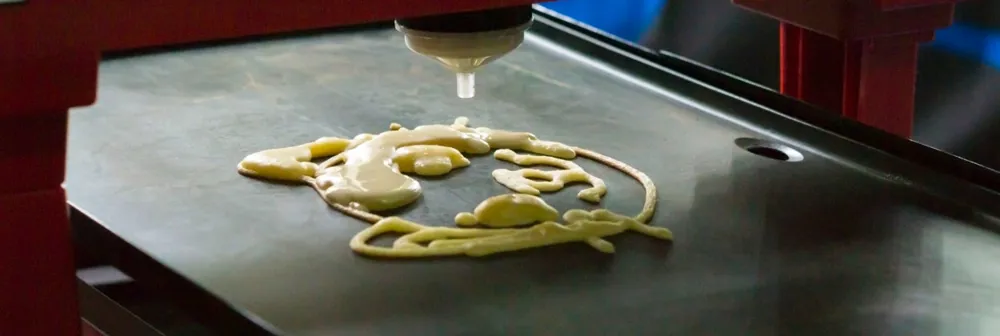3D-Printed Foods
May 17, 2019
- Author: Murray Slovick Contributing Author

Open Meals recently presented an assortment of 3D-printed sushi.
New applications are ground zero in the war to win the hearts and minds of the 3D printing consumer market. As evidence, CES 2019 attracted 78 3D printer manufacturers, 3D scanning companies and 3D printing material suppliers. Applications ranged from 3D printed fake fingernails for nail salons to 3D printers that extruded chocolate in fun shapes and patterns (you can even upload pictures via an app).
The Japanese company Open Meals recently presented an assortment of 3D printed sushi that emulates — or at least tries to — the appearance, texture and taste of the real thing, while adding DNA testing to the recipe.
To operate, a user selects the food they want from a patent-pending “Food Base” digital food database that stores pertinent information (flavor, shape, color, nutrients and texture) of different kinds of sushi. Open Meals says its Food Base is the world’s first digital food platform where food data is collected in a manner similar to music distribution sites.
The company says it will be possible to upload, search, download and share food data, whether homemade dishes or from five-star restaurants. When a sushi chef makes a piece in a restaurant in Tokyo it will be scanned and subsequently “teleported” — reproduced at the location of the Open Meals Pixel Food Printer — so you can eat the recreated food anywhere in the world. A robotic arm prints out small cubes in the shape of the food made from edible gel. In each layer the printer injects each pixel with different flavors, colors, nutrients, etc., which are then combined together.
Keeping it Relevant
One unique element of the Open Meals process is that nutrients can be added to food to meet the requirements of the diner. This is done via DNA sampling. Open Foods says in the future that when you make a reservation at Sushi Singularity, the company’s proposed restaurant in Tokyo, you will receive a health test kit in the mail. Your job is to send back a sample, which can be saliva, but also other samples associated with medical testing. It is then analyzed with regard to what kinds of nutrients your body needs. When you visit the restaurant, the necessary proteins, vitamins, minerals and other nutrients will be added to your 3D-printed dinner.
Because it can help to convert alternative ingredients such as proteins from algae or other vegetable proteins into foodstuff products, 3D printing opens the door to food customization that meets the individual needs and preferences of the sick, athletes, and those who are vegetarian, vegan or have gluten-free requirements. In this way, 3D food printing can add a vegetarian take on traditional meals. Using 3D printing formulations, plant-based ingredients can be substituted for the complex substance that is meat.
Any Hitches?
Yup, two pretty big ones. Shape-wise actual sushi is not pixelated (the Open Meals shapes are reminiscent of early video game graphics). Open Meals says it is aiming to shrink the pixel blocks from its current 5mm size so the look will be more realistic when printed.
But how does it taste? According to published reports, the synthetic sushi left a lot to be desired and Open Meals admits that more work has to be done to get the gel formulations to have the right flavors.
Open Meals, in conjunction with marketing firm Dentsu, have set out to open Sushi Singularity next year to customize its sushi to individual dietary needs. When a diner walks into the restaurant the plan is to map their facial features, identify them via computer facial recognition software and prepare a meal accordingly.
Murray Slovick
Join our community of innovators and shape the future of technology.



